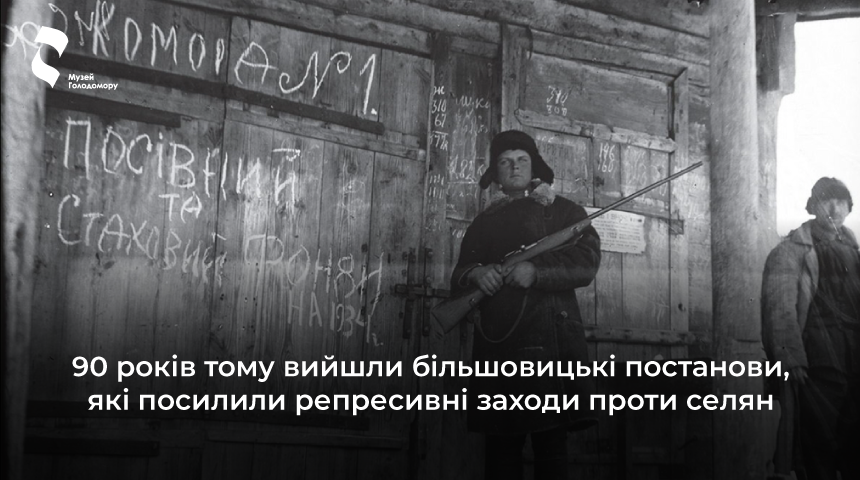90 years of Bolshevik resolutions that intensified repressive measures against the farmers
90 years ago, the infamous resolutions of the Politburo of the Central Committee of the Communist Party (b) of Ukraine, “On measures to strengthen grain procurements.” and “On the elimination of counter-revolutionary nests and the destruction of Kulaks’ groups,” dated November 18, 1932, were issued. They further intensified the repressive measures against the Ukrainian farmers.
In particular, it was the resolution, “On measures to strengthen grain procurement,” that required putting “especially malicious saboteurs,” collective farms that failed to fulfil the plan, on the “black board.”
In general, the document had 5 sections: on the mobilization of “conscious and stable” communist workers in grain procurement, the distribution of party forces and the establishment of reporting and control of grain procurement work, as well as on grain procurement in collective farms, state farms and individual farmers. The implementation of grain procurement plans was considered “…the main duty to the party and the working class, the primary task to which all tasks in the collective farms should be subordinated.” The resolution obliged local authorities to complete grain procurement by January 1, and to create seed funds by January 15, to prohibit the issuance of bread from any in-kind funds in collective farms that did not fulfill state tasks, as well as the issuance of in-kind advances and bread for the so-called public nutrition of collective farm workers. Bread distributed for labor days was subject to immediate return. The grain from homesteads was also included in the bread production plan. In collective farms that had already fulfilled the grain procurement plan but could still give something, the resolution encouraged “over-fulfillment of the plan.”
At the same time, the resolution introduced the position of a special controller at threshing machines, created troikas at MTS, village councils and district executive committees. They were obliged to winnow straw, chaff, and waste, to check the social background of accountants in collective farms, to prosecute those guilty of stealing and hiding bread, and to apply the law of “five ears of grain” to them.
Separate punitive and repressive measures were provided for individual farmers: a fine in kind in the form of a 15-month norm for household meat harvesting, and an annual norm for the delivery of potatoes, they also had to urgently return seed and food loans to collective farms.
In addition, the resolution “On the elimination of counter-revolutionary nests and the destruction of Kulaks’ groups,” issued on the same day provided for strengthening “repressions against kulaks and other counter-revolutionary elements.” It actually legitimized the unpunished robbery and destruction of peasant farms.
These resolutions became another tool of the Soviet regime for the planned confiscation of grain harvest and all other food products from the peasants. Very soon, this led to the mass killing of people by hunger, the apogee of which fell on May-June of the following year.
